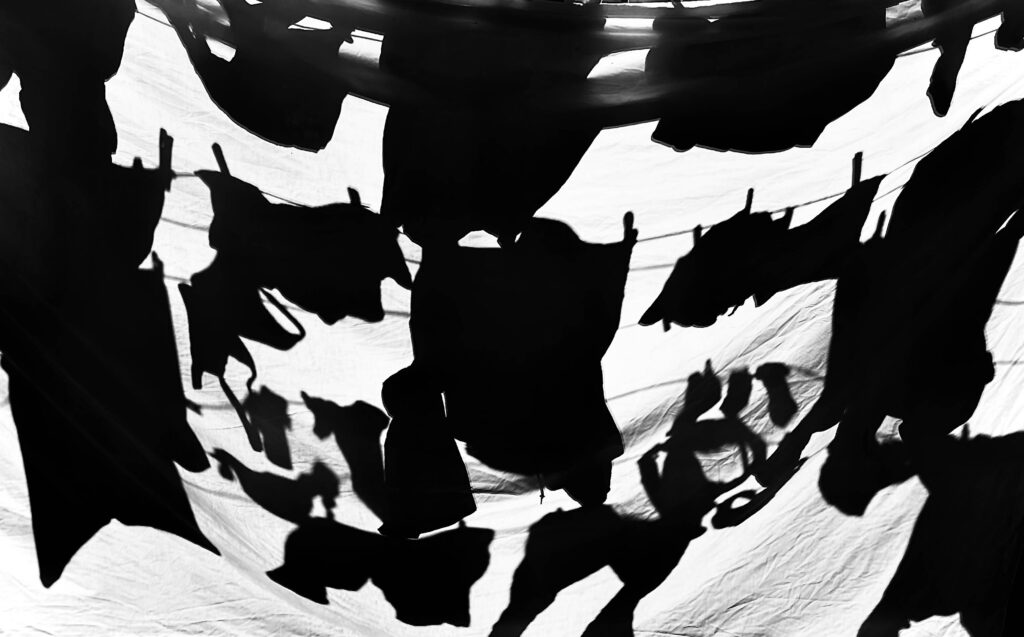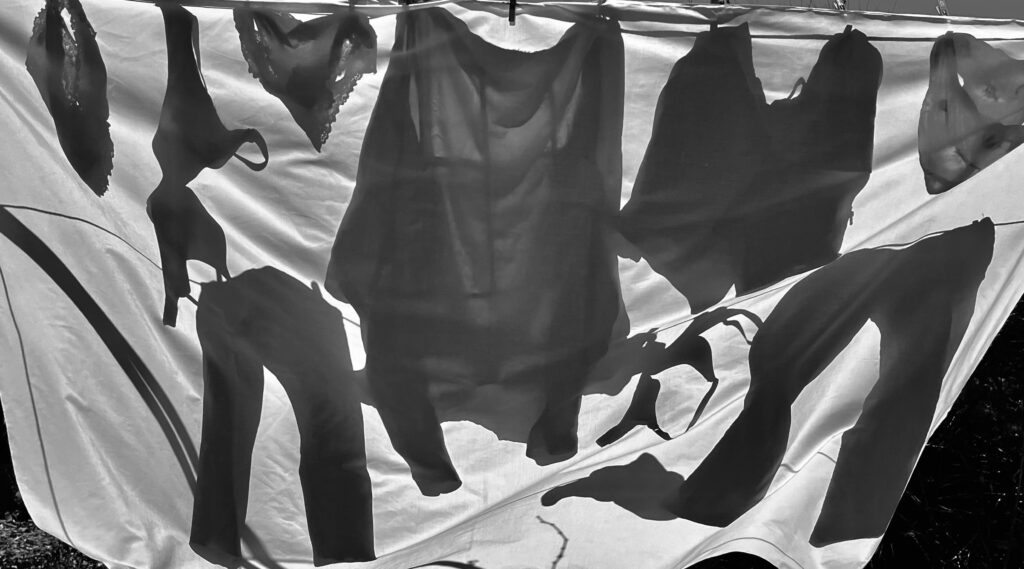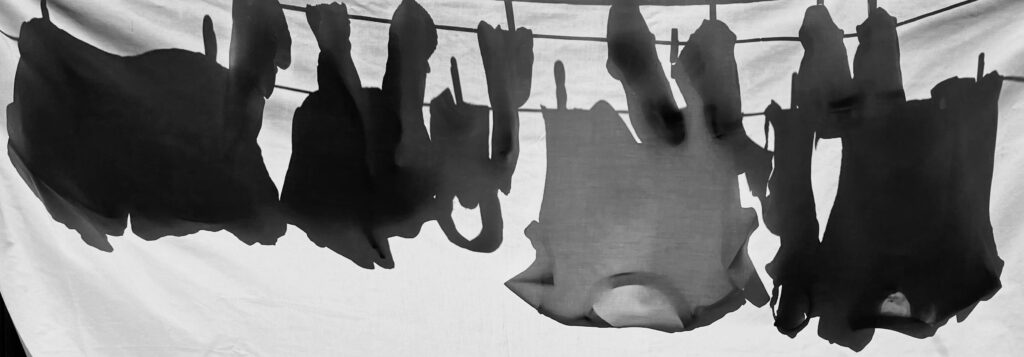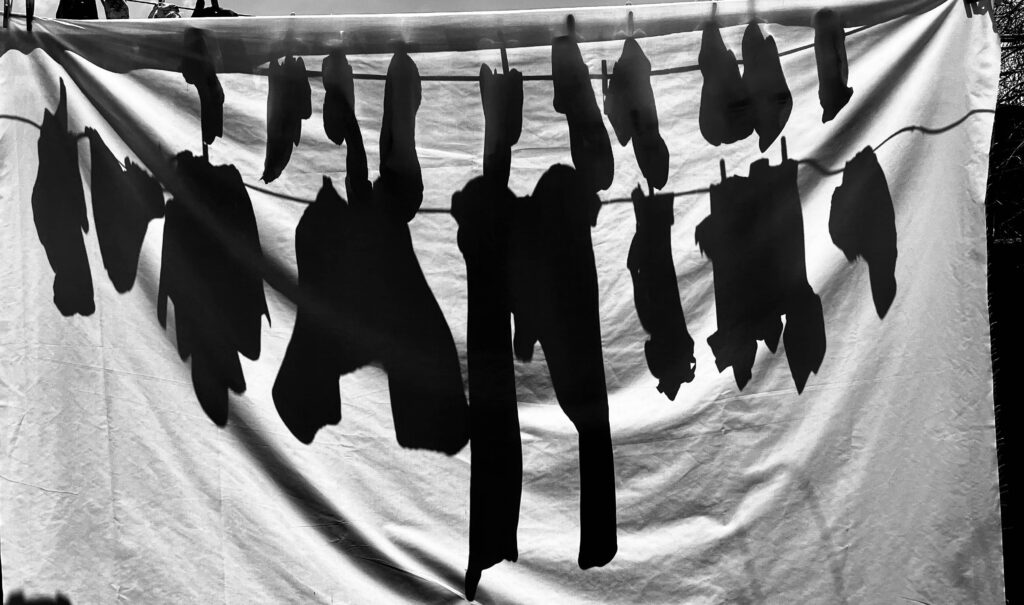Washing Line Shadows
Artist Statement
‘Washing Line Shadows’ asks the question, ‘What can creative photographic practice reveal about gender roles in remote communities of the past?
Memories of the daily washing ritual typified by overflowing clothes lines on a remote childhood farm in the Upper Murray have inspired recent photographic explorations in light and shadow. Glimpsing through translucent white, starched sheets to see lines of clothing diffused by light, transformed into layers of fluttering abstracted shadows are vivid memories. Wire strung between wooden props served as rustic farm clotheslines.
As obstructors of light, shadows possess an extraordinary ability to give the viewer distorted information about an objects shape. That shape can offer a visual image highly charged with imaginative potential. As a child clothesline shadows were perceived as beautiful, untethered images that existed in a twilight realm somewhere between a rural woman’s mundane daily labour of washing and the utilitarian purpose of wearing clothes to keep warm. These shadow memories somehow came to represent the essence of transient experience. Within the broader concept of remote communities, ‘Washing Line Shadows’ investigates the isolation inherent in a remote community. Access to consumerism, media, health, education, and social interaction were and, in many cases, still are all hampered by isolation and remoteness.
This body of work suggests geographical and social isolation perhaps further supported the division of labour into traditional’ gender’ defined tasks. ‘Washing Line Shadows’ focuses on the production of photographs to reveal the sense of purpose, solace, and connection daily rituals such as clothes washing offered women within remote communities of the past. A conscious decision was to print in black and white as variations of transparency in different clothing shapes seemed to reveal unfamiliar and unexpected tonal silhouettes. These could be seen to echo more recent blurring of gender stereotypes relating to work and the division of labour.




